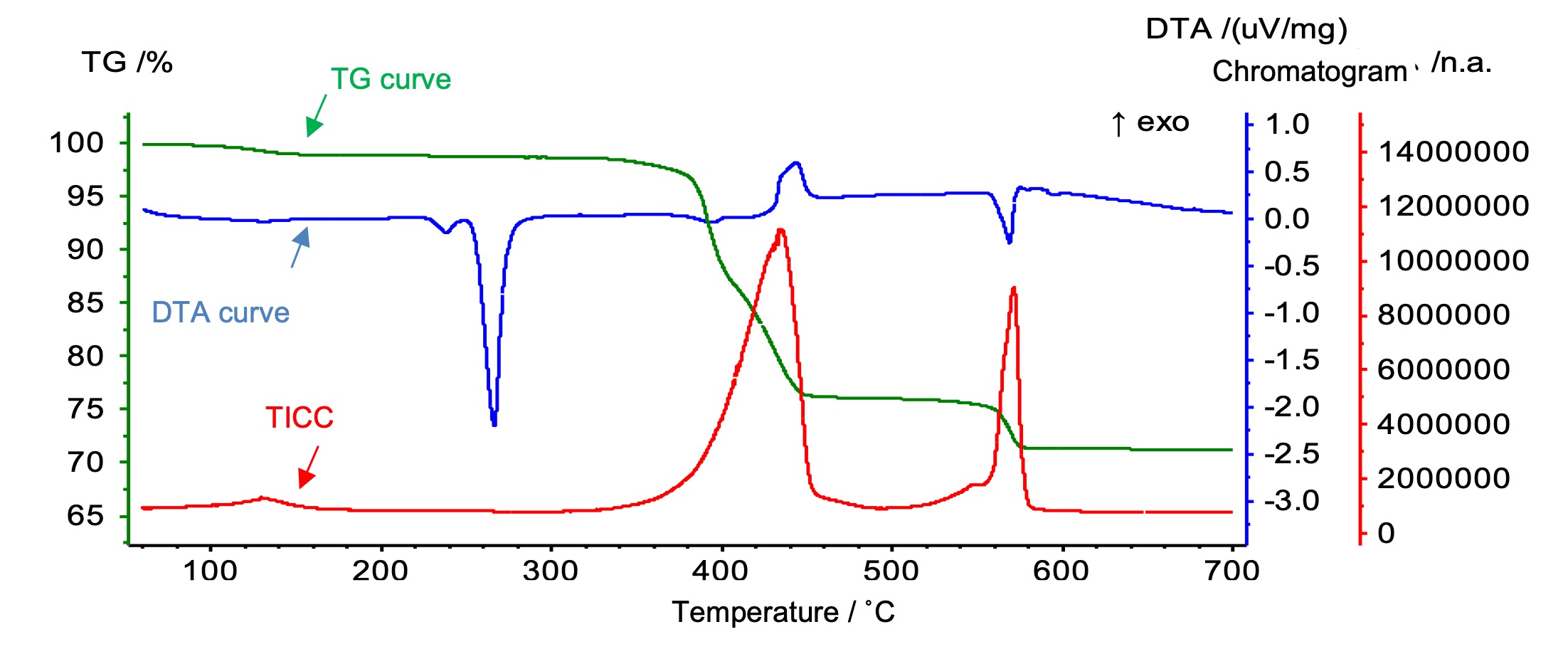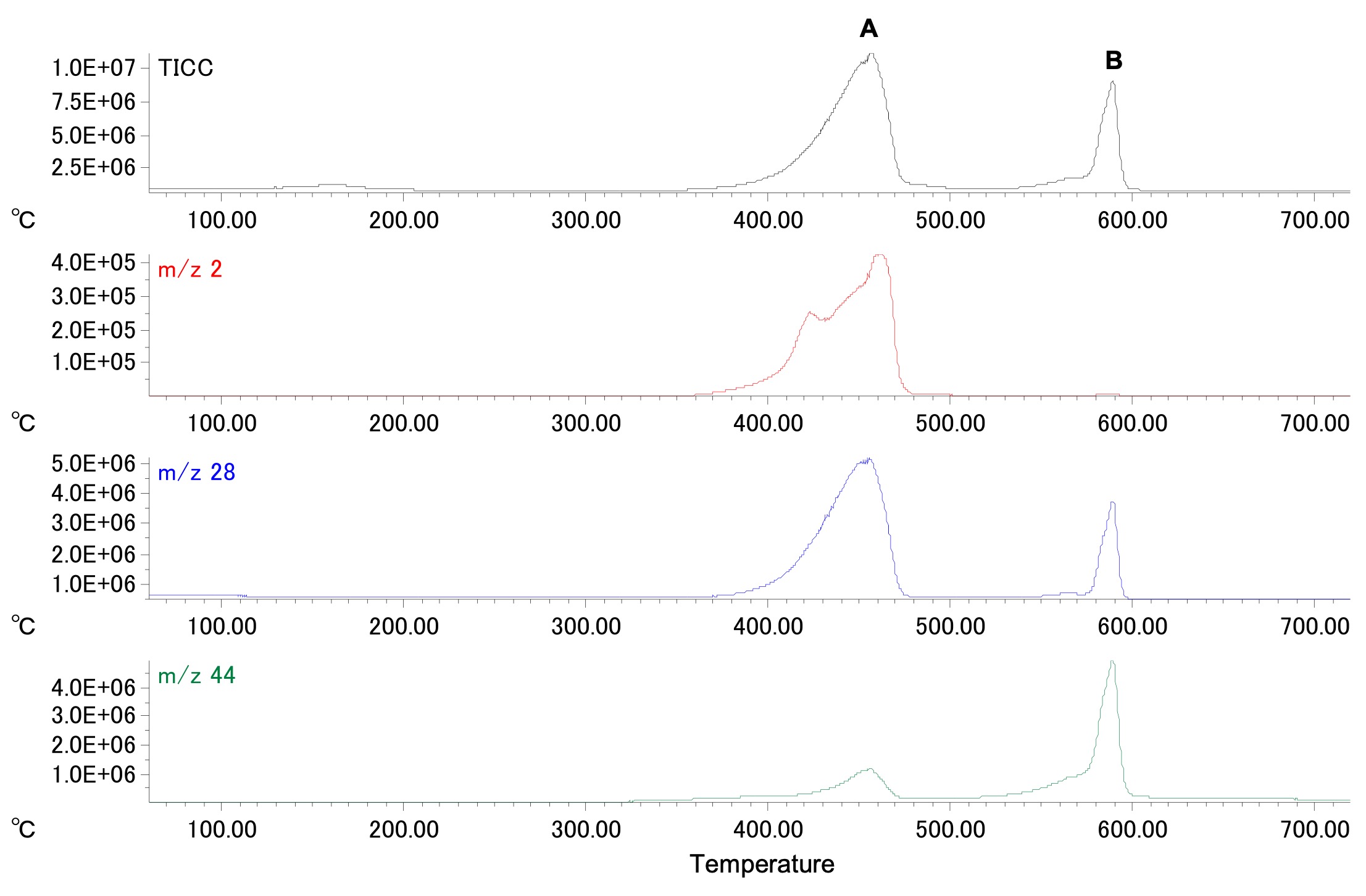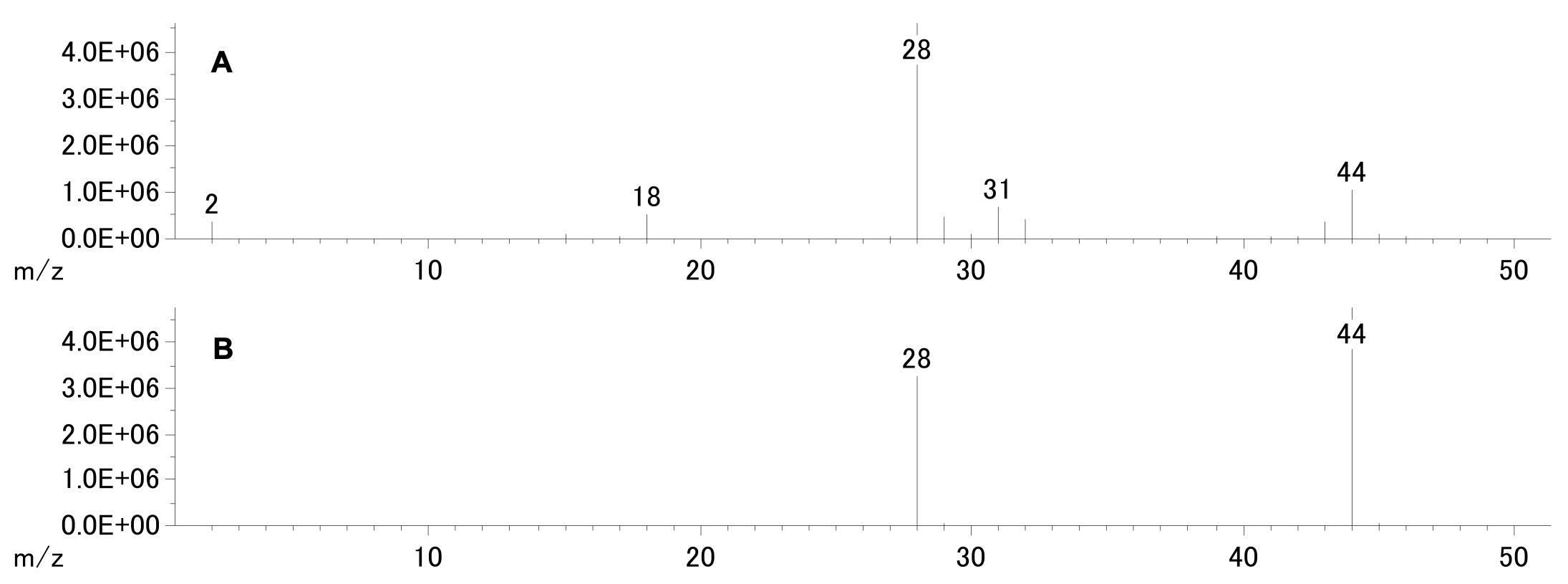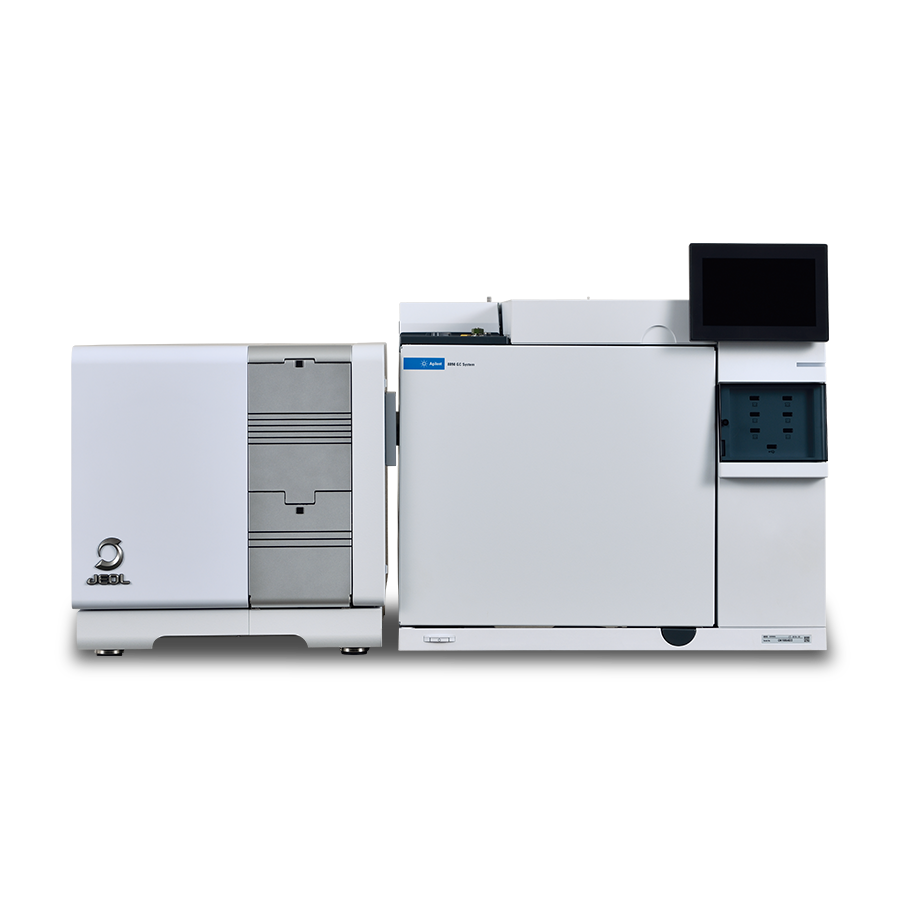Thermal-decomposition Process Analysis of Sodium Formate Using TG-MS
MSTips No.252
Overview
Thermogravimetry (TG) is used to measure weight changes of samples under programmed heat conditions. A system combining thermogravimetry/differential thermal analysis (TG/DTA) with mass spectrometry (MS) can be used for both qualitative and quantitative analysis of gases evolved from the TG furnace into the mass spectrometer. In this application note, we show qualitative analysis of the thermal-decomposition process for sodium formate using the “STA2500 Regulus” TG system (NETZSCH) and the gas chromatography–quadrupole mass spectrometry (GC/QMS) “JMS-Q1500GC” system (JEOL).
Equipment
A 20 mg sample of sodium formate was weighed with an electronic balance and measured by TG-MS. Table 1 shows the TG-MS measurement conditions. Ionization energy was set to 17 eV, which ionized hydrogen, but not the helium used as the atmospheric gas.
Table 1. TG-MS measurement conditions.

Results
TG-MS measurement results for sodium formate are shown in Figure 1. The TG curve (= weight change), differential thermal-analysis (DTA) curve, and total ion current chromatogram (TICC) are respectively shown as green, blue, and red lines. In the DTA curve, the endothermic reaction was detected at 260˚C. This was due to the melting of sodium formate (its melting point is 253˚C). In the TG curve, weight loss was detected at 430˚C and 570˚C, and in the TICC, evolved gas peaks were detected at corresponding temperatures.

Figure 1. TG, DTA, and TICC curves of sodium formate.
Figure 2 shows the TICC and extracted-ion chromatograms (EICs) of m/z 2, 28, and 44.

Figure 2. TICC and EICs of sodium formate.
Figure 3 shows mass spectra of peaks A and B in the TICC. The mass spectrum of peak A shows m/z 2, 28, and 44, which were H2, CO, and CO2, respectively. The mass spectrum of Peak B shows m/z 28 and 44; m/z 2 was not detected.

Figure 3. Mass spectra of peaks A and B.
Consequently, TG-MS measurement results suggested the following thermal-decomposition reaction scheme [1]:

The above results suggest that TG-MS can be used to analyze chemical reactions in the thermal-decomposition process.
Reference
[1] Shunsuke Shishido and Yoshio Masuda, Journal of the Chemical Society of Japan, No. 1, pp. 66–70 (1976).
Solutions by field
Related products
Are you a medical professional or personnel engaged in medical care?
No
Please be reminded that these pages are not intended to provide the general public with information about the products.

